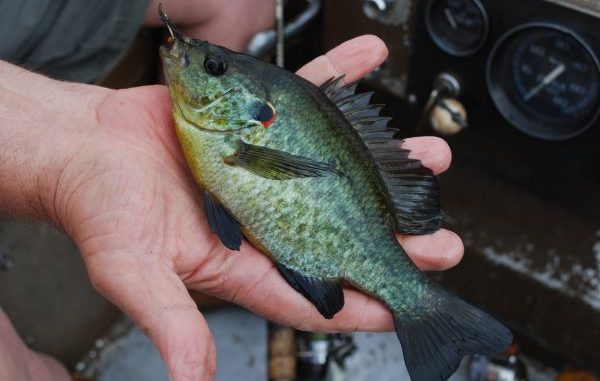
When bream fishermen refer to bream “bedding up” they’re not speaking of bream going to bed to sleep. Actually, bedded bream are spawning bream — the most active of bream and, therefore, the easiest to catch.
The term “bream” can be a catchall term for all species of sunfish — bluegills, redears, longears, warmouth, green sunfish and others — or it can be used specifically for bluegills.
We will use it as a catchall here.
The nine species of bream found in Louisiana belong to the same family as bass and crappie. They all form nests, circular spots on the bottom that are swept clear of sediment by the males’ fins.
Some, such as warmouth (aka goggle-eyes), make their nests solitarily or in small groups. Others, such as bluegills and redears (aka lake runners or chinquapin) form dense colonies of nests, almost side-by-side.
The spawning colonies are called beds, and the bream on them are called bedded bream. Almost all of these fish are males, who fiercely defend their nest against intruders, including baited hooks.
Females come to the nests only briefly to spawn and then leave.
A lake runner bed can have dozens of nests, and a large bluegill bed can hold hundreds of nests. For a fisherman, finding a bed is hitting the fishing jackpot.
Lake runners are the first bream to spawn in the spring. April has always been considered a prime lake runner month, but the spawn seems to begin earlier now than it once did, especially in South Louisiana — and March produces a lot of bedded fish, including the biggest ones.
Lake runners are considered to spawn only once per season, although some might spawn twice.
Bluegill males begin constructing and defending beds in April, but May is considered the prime month for the beginning of bedding season. Finding bluegill beds is the key to catching them all summer because they will spawn over and over again from May through August. Males are always larger than females.
Goggle-eye spawning is concentrated in May, although irregular spawning activity seems to take place until August. Goggle-eyes, which are colorful fish under any circumstances, glitter like jewels during spawning season. Both sexes of goggle-eyes are about the same size and they are willing biters, even when not on their spawning beds.